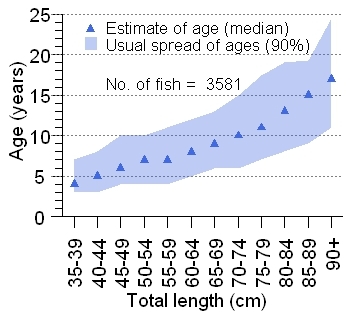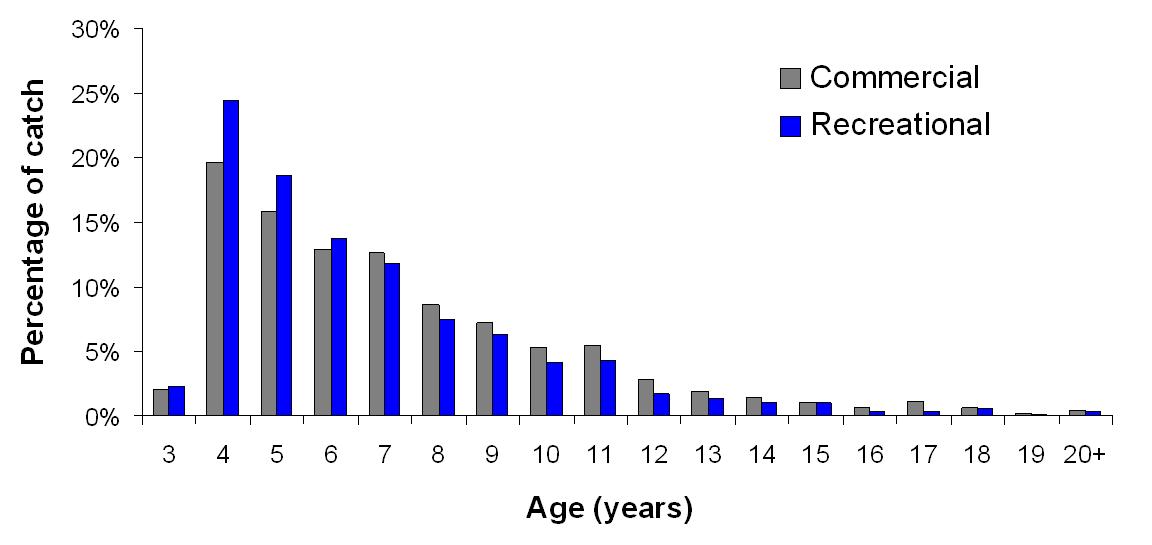Snapper monitoring
In Queensland, snapper (Chrysophrys auratus) range from the New South Wales-Queensland border northwards to Proserpine. Snapper is a popular target species for both recreational and commercial fishers with recreational fishers accounting for almost 75% of the catch. Peak fishing season on offshore grounds occurs during the winter months but they can be caught all year round. Juvenile snapper (<1 year old) are found in protected waters like those of Moreton Bay.
Snapper have a minimum legal size of 35 cm, an in-possession limit for recreational fishers of 4 fish (no more than 1 fish over 70 cm) or 8 per boat with no more than 2 over 70cm (with 2 or more people on board), and total allowable catch limit for commercial fishers of 42 tonnes. The take of snapper using commercial net gear is prohibited. A closed season also applies to snapper throughout Queensland tidal waters from 15 July to 15 August.
A variety of strategies are used to collect biological information (length, sex and age) for snapper caught in Queensland waters. The information is used to help assess the status and sustainability of the stock. Snapper are currently assessed as depleted.
Fish age
An important component of the monitoring program is the collection of age information to describe the age structure of the catch. To estimate the age of fish, the otoliths (ear bones) are removed from the head of fish and then examined under a microscope (see photos). The otoliths contain growth rings; in snapper these are visible once the otolith has been sectioned. The annual growth rings can be counted to help estimate the fish's age.
How old is your fish?
Snapper is a long-lived species, with a slow growth rate that can vary considerably between individual fish. The age information collected in the monitoring program has been used to construct an age-at-length graph for snapper (see age-at-length graph). After measuring the total length of your fish, you can estimate its age using the age-at-length graph. For example a 65 cm snapper is likely to be nine years old but it could easily range from 5 to 13.
© Queensland Government
Information collected in the monitoring program during 2012 indicates that the majority of snapper caught were between 4 and 11 years old (approximately 90%), with very few fish older than 15 (see age distribution graph). A slightly higher percentage of the commercial catch consisted of fish over six years old than in the recreational catch, but the range of ages caught by each sector was similar. Snapper become sexually mature at two to three years of age so will potentially spawn for several years before they are caught.
Interestingly, the three oldest snapper aged in the monitoring program so far, were caught in 2012. The oldest snapper was estimated to be 34 years old; it was 75 cm long and caught by a commercial fisher. The next oldest were two fish, estimated to be 26 years old and caught by recreational fishers. These two fish measured 71 cm and 90 cm, highlighting the variability in growth rates between individual snapper.
Support and assistance
Thank you to everyone who has generously assisted with the monitoring of snapper by donating frames or allowing us to measure your fish.

